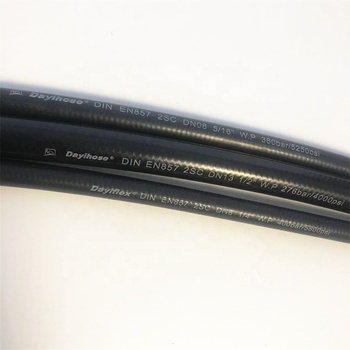335345435
Ara . 01, 2024 16:01 Back to list
lpg regulator hose
Understanding LPG Regulator Hoses Safety and Selection Tips
Liquefied Petroleum Gas (LPG) is a widely used fuel source for various applications, including heating, cooking, and fueling vehicles. While it offers efficiency and convenience, safety is paramount when handling LPG. One critical component of any LPG system is the LPG regulator hose. Understanding its functions, types, and maintenance requirements is essential for ensuring safe and effective use.
What is an LPG Regulator Hose?
An LPG regulator hose is a flexible tube that connects the LPG cylinder to the regulator and subsequently to the appliance or system using the gas. It plays a vital role in ensuring a secure, leak-free connection to transport gas safely. The hose is designed to withstand high pressure while remaining flexible enough for easy installation and movement.
Importance of Safety
Given the flammable nature of LPG, safety is of utmost importance. A failure in any component of the LPG system can lead to gas leaks, which may result in catastrophic fires or explosions. Therefore, selecting the right hose and maintaining it properly is crucial for ensuring safe operation.
Types of LPG Regulator Hoses
There are several types of LPG regulator hoses, each designed for specific applications. They can be categorized based on their material, pressure ratings, and intended use. Here are some of the most common types
1. Rubber Hoses These are the most common type used in residential LPG applications. They are flexible, lightweight, and can handle moderate pressures. However, exposure to sunlight and extreme temperatures can degrade rubber over time.
2. PVC Hoses Lightweight and resistant to chemicals, PVC hoses are also adaptable for LPG usage. However, they may not be suitable for high-pressure environments.
3. Metal Braided Hoses These hoses are reinforced with metal braiding, providing extra durability and resistance to high pressure and abrasion. They are commonly used in industrial applications where safety is critical.
4. PTFE Hoses Polytetrafluoroethylene (PTFE) hoses are highly resistant to chemicals and heat. While more expensive, they offer excellent durability and are often used in specialized applications.
Key Considerations for Selection
When selecting an LPG regulator hose, several factors should be considered
lpg regulator hose

- Pressure Rating Ensure that the hose can handle the maximum pressure produced by the regulator. This rating should match or exceed the output pressure of the gas regulator.
- Length and Diameter The length of the hose should be sufficient for the intended use without being excessively long, which could lead to increased resistance. The diameter should accommodate the flow requirements of the connected appliances.
- Material and Flexibility Choose a hose made from durable materials that can withstand environmental factors like UV rays or extreme temperatures. The flexibility of the hose is also essential for installation in tight spaces.
- Compliance with Standards Ensure that the hose meets local safety standards and regulations. Look for certified products that display compliance markings.
Maintenance Tips
Proper maintenance of your LPG regulator hose is essential for safety and performance
1. Regular Inspections Frequently check the hose for signs of wear, cracks, or leaks. Listening for hissing sounds or smelling gas can indicate leaks.
2. Immediate Replacement If you notice any damage, replace the hose immediately. Never attempt to repair a damaged hose.
3. Avoid Overstretching Be cautious not to stretch the hose beyond its limits, as this can lead to cracks or breakage.
4. Keep it Clean Regularly clean the hose connections to prevent dirt and debris from causing leaks.
5. Follow Manufacturer Guidelines Adhere to the manufacturer’s recommendations regarding replacement intervals and usage.
Conclusion
LPG regulator hoses are vital components in any LPG system. They ensure safe transport and connection of gas from the cylinder to appliances. By understanding the types of hoses, making informed choices regarding selection based on safety and performance, and committing to regular maintenance, users can help to ensure a safe and efficient LPG experience. Always prioritize safety, and when in doubt, consult a professional. Whether for home cooking or industrial use, the reliability of your LPG system can significantly impact your overall safety and experience.
-
High-Quality Distribution PTFE Hose for Industrial Applications
NewsJul.25,2025
-
High-Precision Hydraulic Hose Crimping Machine for Fast, Reliable Fittings
NewsJul.24,2025
-
High-Quality Distribution PTFE Hose for Industrial Flexibility
NewsJul.23,2025
-
Durable Pressure Washer Rubber Hose for Hot Water & High Flexibility
NewsJul.22,2025
-
Twin Hydraulic Hose for Efficient Fluid Transfer | Durable & Flexible
NewsJul.22,2025
-
Twin Hydraulic Hose | High Pressure & Durable
NewsJul.21,2025



